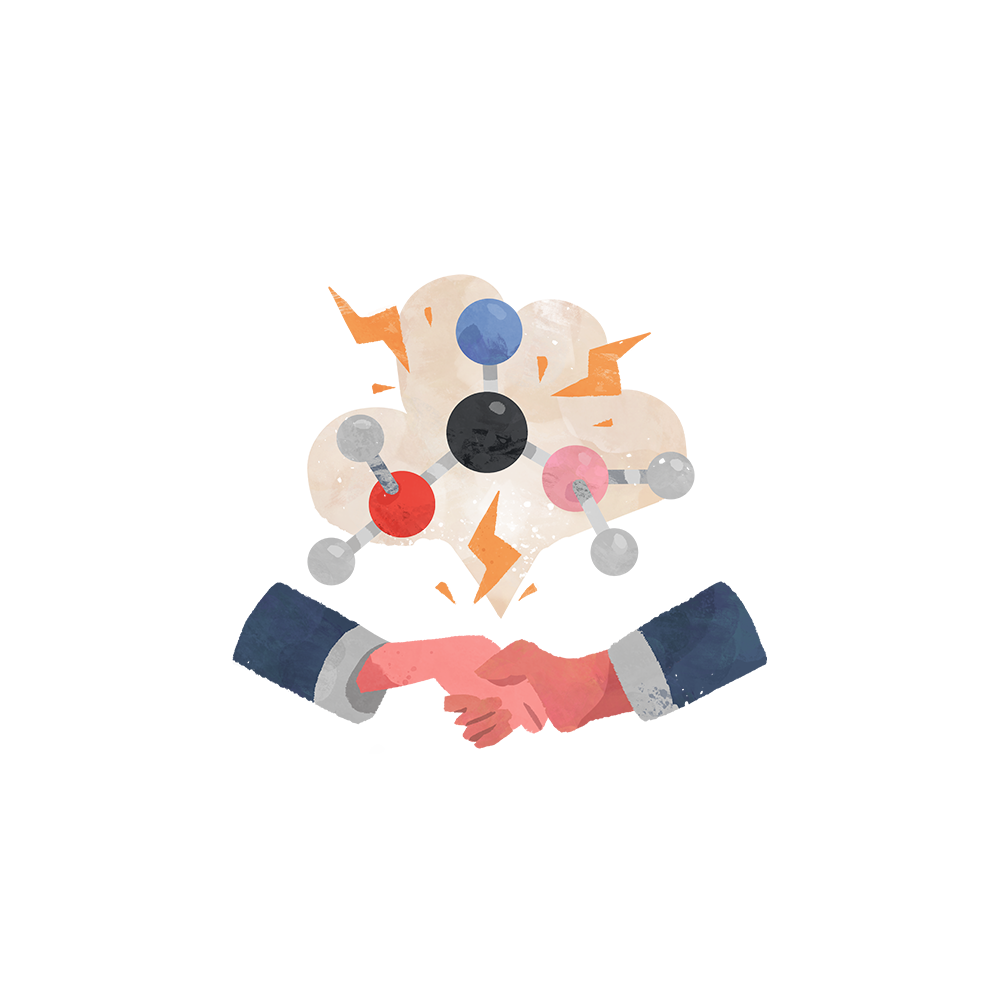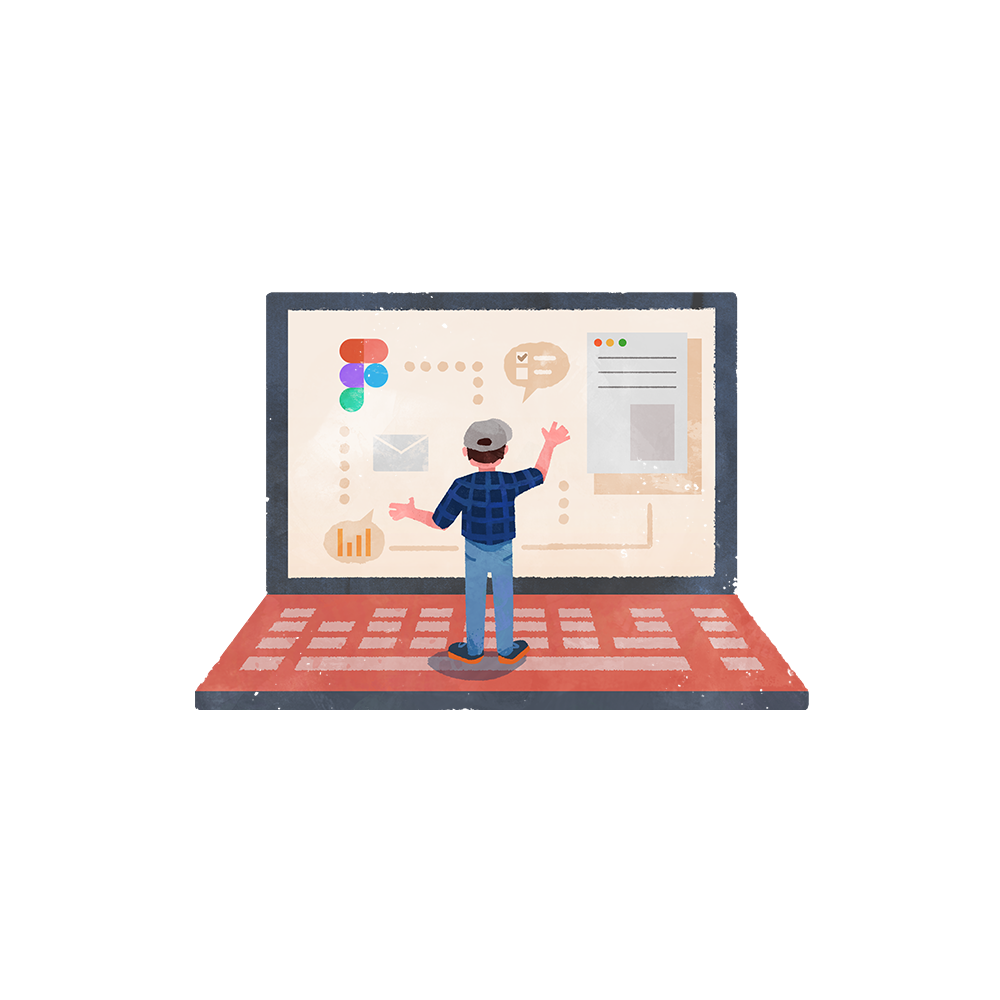Max Soloviev, UX
Design software identity and access that changes user behavior
I am Max. I’m originally from Russia where I began my career as software engineer working at various startups. In smaller companies you often have to wear multiple hats. I always cared about user experience and so I would volunteer to take on designer role in addition to my engineering duties. That provided a nice segway into the world of design and helped me better understand synergy between design and engineering. At some point I realized that design is where my true passion lies and I decided to focus on that path full time. My first ‘official’ full-time design role was at Zillow where I got a chance to work across a range of experiences from core parts of the home shopping experience on the web to mobile apps and ads. I’ve always been entrepreneurial so I left Zillow to work on my own startup which proved to be a great learning experience, very challenging at times but also highly reward. In 2016 I joined AWS to get some experience with enterprise design where I now lead design for the AWS Identity organization covering identity, access, resource management and governance areas.
From startup to large company experience, what do you look for in a company? Do you have a framework for deciding that something is interesting enough to continue researching it?
At the high level I look for 3 things: challenging problems, opportunity to have real impact and a great deal of autonomy. Given my engineering background I’m biased towards places with high technical complexity. VR? Cloud? AI? All of these spaces look very interesting and exciting. I am a bit torn about crypto stuff. Tech involved there is fascinating but impact on most peoples lives has been limited so far. However, the actual domain matters less to me since I enjoy learning new stuff and figuring this out.
How would you define a principal designer in the industry?
I would say someone who recognizes and works on most complex and impactful projects in an organization. The kind of projects that if they don’t get solved in right way, there is a significant risk to the business. Just like on any decent project that typically diving deep into problem space, developing rapport with the team and aligning on a long-term vision together that can then be translated into incremental steps required to achieve it. In many this is similar to what senior designers (or any designers for that matter) are expected to do. The key difference is in scope: the bigger the scope is the more challenges you face - organizational complexities, stakeholder management, resourcing, scheduling, and beyond. And the job of principal designer there is to help team navigate all of that, balance competing priorities, reach alignment and deliver best possible outcome for customers. This is the power of design, we help people to meet in the middle and work together. To me, it is like a diplomat in the principal role.
Does the principal title help you to interact with your team? Do you experience any difference?
Getting promoted to a principal did not change much in interactions with my immediate team and folks that I share history with. But it did change my overall experience when interacting with new teammates and stakeholders. Previously, I had to put in extra effort in order to prove myself and my expertise, to get others to consider my perspective. Now, when I interact with new team members, it’s as if I came in with some recommendations. A lot more people actively want to know what I have to say. It’s surprising change that I’m still getting used to.
Becoming a principal have opened up opportunities to work with more senior leaders across organization and to represent design team perspective at the higher level of discussions. I’ve already learned a lot from this close collaboration with principal engineers, principal designers, directors and beyond.
On the other hand, I can also feel additional responsibilities and expectations. The bar is higher now for anything I do. What I have to say now carries greater weight and has higher visibility. I’m mindful of that and I’m trying to be more thoughtful and precise in how I express my opinion.
Going back to the career decision question. Was there a moment where things clicked for you that you decided to stay on the IC track?
Not really as I’ve always enjoyed being an IC. Occasionally I do ask myself if I should become a design manager? This question usually pops into my head when I face a difficult situation on some challenging project. At that point grass seems that much greener on the other side. And while there are definitely some advantages to being a manager, I’m just not excited about becoming one.
Based on your observation, what are the trade offs or if there's any risks should designers note about before continuing down to the IC role?
Many companies that do not have strong design culture also do not have a well-established career ladders for designers. But even companies with established design career tracks impose comparatively low ceiling to how far designer can progress. In that sense I somewhat envy more mature disciplines such as engineering or people management with roles such as Distinguished Engineers and CXO suite and well-tracked path for how to get there.
Strong relationships with teammates/stakeholders is one of the most powerful tools that designers have. Your scope grows, you end up having to prioritize which projects and relationships you focus on the most inevitably spending less time on others. And when changing business needs cause you to pivot, you have to go through this period of ‘warm-up’ with your new team: adjusting to their style, understanding what is important to them etc. If you skip that, you’d risk diminishing impact you can have on the team and product.
For designers are who staying on the IC path, what are the most important skills they should learn outside of hard craft skills?
I believe that by the time you get to the senior designer level, you're almost at the peak of your craft as a core design discipline be it the interaction design or whatever your specialty is. To keep growing then you have to focus on areas outside of the traditional design. I suspect the actual skills you need are dependent on the culture of organization you are in.
Personally I'm focused on growing my product management skills, getting better at stakeholder management and improving my storytelling abilities. And technology. Both technology that your company builds but also what other tech your customers are using.
You also have to learn to become more pragmatic. Shipping perfect solutions is so satisfying but in the real world we have to make trade-offs. For me as a designer it’s so difficult to compromise on CX and yet I’m learning to become more pragmatic by taking a broader perspective. Not only this makes me feel better about decisions made but also enables me to help team made the best trade-offs.
You mentioned you are developing the product management skills currently. How do you deal with Designer and Product Manager have overlapping skills?
I love when it happens as that overlap helps empathize with your partners. And shared empathy leads to greater collaboration making easier, productive and frankly more fun. The key is to respect each other responsibilities and recognize core expertise each individual has. Typically data drives our decision making. But if we don’t have the right data and it comes down to judgement call, I’ll happily defer to my PM partners on all things product just like they would do the same on design matters.
What is your day to day look like?
I work with teams spanning multiple time zones and mornings is when we all are online. So I spend my mornings in meetings with my teams presenting my work, reviewing work of others and in discussions. Left unattended my calendar tends to fill up with even more meetings. To counter that I’ve now blocked off my afternoons to allocate time for work that requires deeper focus. Lately I’ve spending most of that time either writing docs or reading docs written by others. But every now and then I get to do work on actual designs or tinker with prototypes and I really enjoy that.
How do you see yourself in the next 2-3 years in your career?
I love being a designer and feel very fortunate to have found occupation that I’m so passionate about. In that regard I don’t expect any major changes in 2-3 years.
I’ve been working in identity space for almost 6 years now and I’m enjoying it a lot. Identity is at the core of so many of our digital experiences, it’s nuanced, complex and there is no shortage of tough challenges to solve. At the same time, there is a lot going on in emerging tech - VR, blockchains, robotics, heck even space exploration. As a technologist I’m fascinated by all that stuff and I believe designer can play a really important role in shaping those fields. There is something very appealing in approaching new domain with beginners mind, experiencing that firehose of learning you go through.
That’s pretty cool. What advice would you give to a senior designer who is trying to decide between the IC track and management track?
I’d say if you are not sure about path forward, find an opportunity in your current org and become a manager for a while. And if in 6 months you realize that management is really not for you, you can always switch back. I know plenty of people who moved back and forth multiple times before finding role they enjoy the most. And even if you end up switching back, you’ll learn a lot in the process which in turn will make a better IC.




